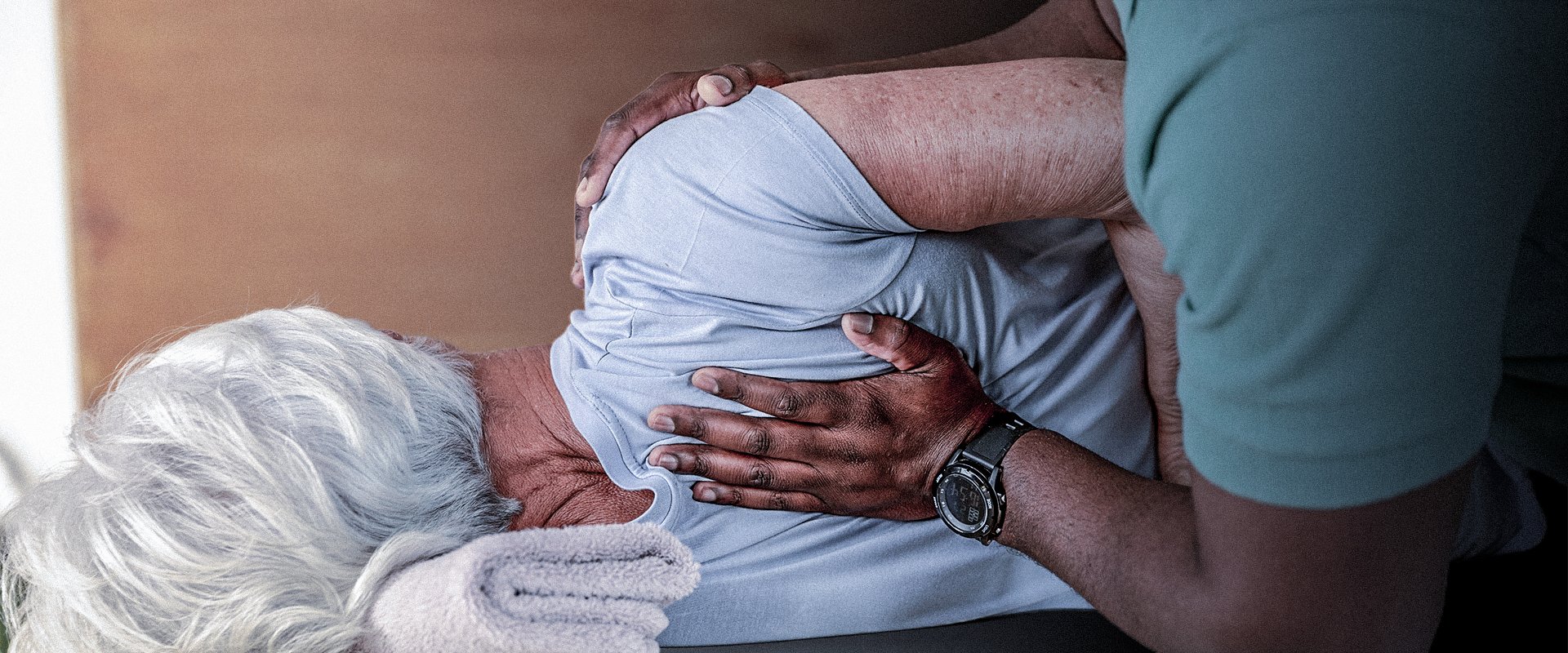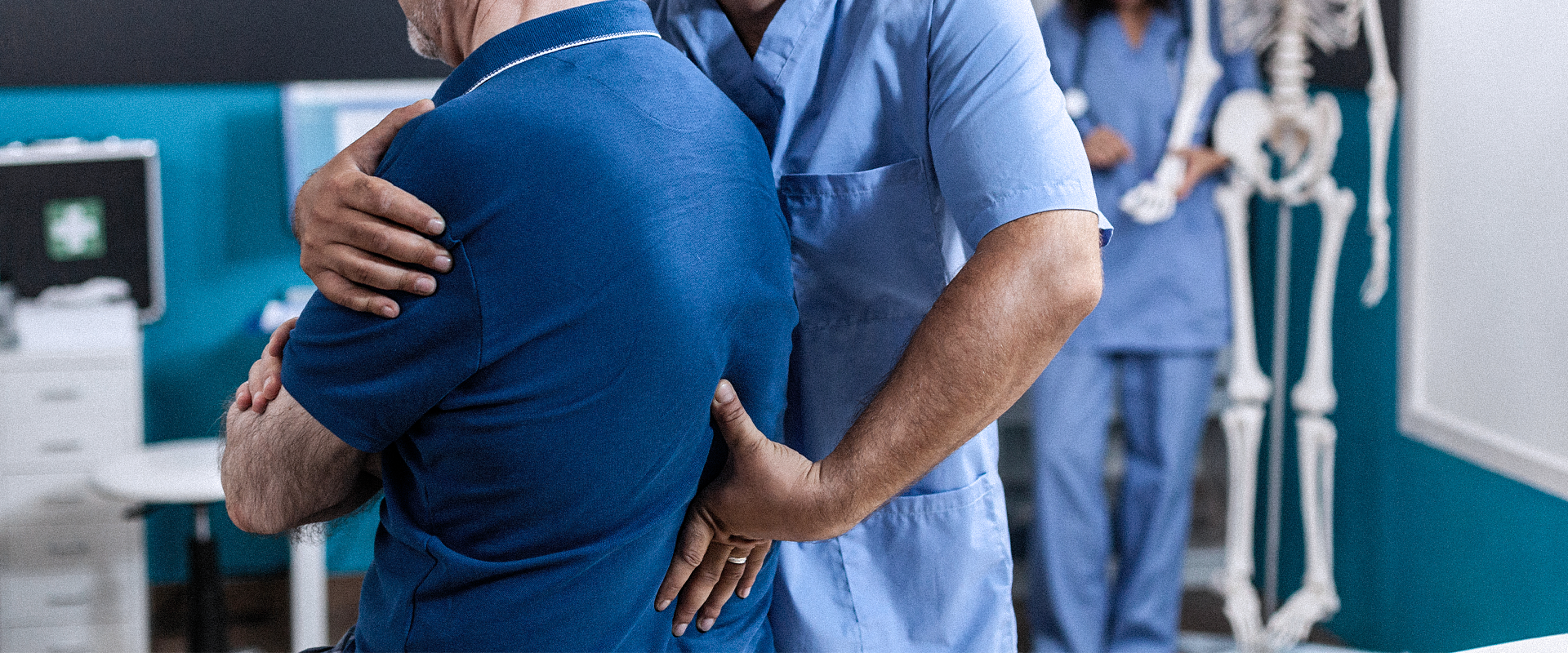
Prehab for Spinal Procedures
AT EVOLVE
Prehab for Spinal Procedures
HOW CAN PHYSICAL THERAPY PREPARE ME FOR SPINAL PROCEDURES?
Individuals preparing for a spinal procedure may be wondering what they can do to prepare for the procedure. Taking a wait-and-see approach is certainly one option but taking a proactive approach may be even better. Working with one of our skilled physical therapists prior to your surgery, a concept called “prehabilitation,” can help prepare the spine and body for the surgery, educate you on what to expect during your recovery and hopefully, shorten overall recovery time.
WHAT DOES PREHABILITATION FOR A SPINAL PROCEDURE LOOK LIKE?
Like all physical therapy, prehabilitation for a procedure on the spine will be individualized to your needs. The general goal of prehabilitation is to improve the health and function of the spine and surrounding areas to the greatest degree possible and prepare you for the surgery. During the initial evaluation my team of therapists and I will examine your spine and assess how you move, and get to know the goals you have for recovery post-surgery. We will also ask you about your current activity level and any symptoms that you are having in your back or neck plus other injuries/medical issues. Prior to surgery, we will create a treatment program to help reduce stiffness, improve muscle strength and neuromuscular control around the area that will be fused and restore range of motion and function in adjacent areas. Each of these things may help you to recover faster and more completely from a spinal procedure.
WHAT PROCEDURES ARE PERFORMED ON THE SPINE?
The spine is composed of individual vertebral bones stacked on top of the sacrum (flat bone at the back of the pelvis) and coccyx (tail bone). The upper spine can be divided into the cervical spine (neck), thoracic spine (mid/upper back) and the lumbar spine (lower back).
Between each of the cervical, thoracic and lumbar vertebrae (except the uppermost 2 bones), lies an intervertebral disc that provides space, shock absorption and cushioning between adjacent vertebrae. Sturdy ligaments run longways through the vertebral column and between segments of the vertebrae to create a stable structure. Small joints between adjacent vertebrae called facet joints allow movement of the spine in its many directions. Finally, running within the canal created by the stacked vertebrae is the spinal cord. The spinal cord is made up of many delicate nerve fibers that carry motor and sensory information between the brain and the muscles, organs, skin and other tissues. Branches of nerves called spinal nerves exit the spinal canal through openings between the vertebrae called formaina.
Procedures on the spine can target any or many of these structures with the goal of addressing pain or dysfunction occurring in the spine. Improving pain, muscle function and overall mobility are some of the primary goals of spine procedures. Below are some of the more common spinal procedures:
- Laminectomy
- Discectomy
- Spinal fusion
- Vertebroplasty and kyphoplasty
- Scoliosis surgery
- Foraminotomy
- Disc replacement
BENEFITS OF PREHABILITATION FOR SPINAL PROCEDURES?
Though many individuals are familiar with how physical therapists work with patients following spine procedures, fewer are familiar with how they can benefit from working with a physical therapist in anticipation of undergoing a procedure on the spine. Ahead of spinal procedures, individuals may be experiencing significant pain, weakness and limitations in function and may have decreased their exercise and activity in response to this pain. While the decision to decrease the level of movement and exercise to avoid provoking uncomfortable or painful symptoms is logical, it doesn’t necessarily put an individual in the best position for an easy recovery from surgery. These changes in activity combined with the underlying spinal condition already present, can lead to joint stiffness and loss of range of motion, muscle weakness, decreases in neuromuscular control and impairments in overall endurance and aerobic fitness both in the spine and in adjacent areas.
If the procedure isn’t an emergency, there are many ways that a physical therapist can help prepare you and your body for the upcoming procedure. The better condition the affected area of the spine, the surrounding areas and let’s face it, your entire body is prior to the procedure, the easier it is to return to your normal activities. Not to mention, your physical therapist can educate you on what to expect after your procedure so you can prepare.
End Injury Progression
Prehab physical therapy for spinal procedures has proven to prevent injury, slow and even stop pain issues, improve performance, and reverse injury progression in many cases.
Relieve Pain
The movements used in this technique can target your entire body helping you to manage discomfort and pain during the course of your physical therapy treatments.
Improve Range of Motion
Posture awareness is an important area to focus on due to the fact that certain positions may cause you further discomfort and pain.
Restore Mobility
You can regain mobility and flexibility by taking part in the stretches and exercises as prescribed by your physical therapist.
How Long Will Prehab Physical Therapy for Spinal Procedures Last?
If you decide to work with a physical therapist to help with spinal procedure related issues, your entire treatment plan could consist of around 8-20+ different physical therapy sessions that will each last 60-90 minutes. Once you complete your customized physical therapy treatment plan, you will be able to continue to do the prescribed stretches and exercises utilized during your PT sessions yet in the comfort of your own home.
WHAT CAN YOU EXPECT FROM PREHABILITATION FOR A SPINE PROCEDURE?
My team of therapists will individualize a prehabilitation program just for you, however, there are many elements that are common across different prehabilitation programs. To help you gain a better understanding of what to expect, here is a list of some common goals of prehabilitation for spinal procedures:
Set expectations: The idea of any surgery can be intimidating. Getting to know your physical therapist before surgery will help build trust with them when it comes time for post-operative care. Having an idea of what to expect after the procedure can also ease some of your anxiety and help ensure you have what you need to support your recovery. Movement precautions or restrictions may be prescribed by your surgeon following a spinal procedure, meaning there will be some movements, positions and activities that you will need to avoid for a while. Your PT can help you prepare for these restrictions and advise you on any equipment or modifications to your home that might be necessary. They can also help you understand what kind of help or support you will need from others and prepare you for how your body may feel after surgery.
Manage pain and inflammation: Pain and inflammation can occur in many different spinal conditions. They alert us that we need to protect the injured area, that the body is trying to heal itself after an acute injury and can signal a chronic, ongoing issue when they persist. Pain and inflammation can benefit from physical therapy to help reduce the pain response prior to surgery, especially if surgery is delayed for any reason. Learning strategies to manage pain and inflammation will help you stay comfortable and as active as possible in preparation for surgery.
Learn how to use assistive devices or adaptive tools: Depending on the area of the spine affected, you may be leaving the hospital with a new walker, cane, or other piece of adaptive equipment or brace, and learning how to use them beforehand can be very helpful. Immediately post surgery, when you are still feeling the effects of anesthesia, and pain and stiffness are setting in, is not the best time to learn how to use an unfamiliar device that is meant to protect your recently operated-on spine.
Build or maintain strength and flexibility: While the spinal procedure is intended to improve your pain and get you moving again, the body will need to heal from the effects of the surgery before that can happen. Maximizing strength, soft tissue mobility and flexibility prior to the surgery can help decrease muscle atrophy and stiffness following the procedure which can ultimately quicken your recovery. It will also help you get into better shape which means less to work on following the procedure.
Prehabilitation for a spinal procedure is an excellent choice for those wanting to get a head start on their recovery and to help improve their chances of a good surgical outcome. Let us support you on both sides of the operating table. Call the office at Evolve today to get started.
Mill Basin (located in Harbor Fitness)
6161 Strickland Ave
Brooklyn, NY 11234
Monday: 7am-8pm
Tuesday: 7am-8pm
Wednesday: 8am-5pm
Thursday: 7am-8pm
Friday: 8am-1pm
Park Slope (located in Harbor Fitness)
550 5th Ave.
Brooklyn, NY 11215
Monday: 9am-8pm
Tuesday: 8am-6pm
Wednesday: 9am-8pm
Thursday: 8am-6pm
Friday: 8am-3pm
Gravesend
372 Avenue U
Brooklyn, NY 11223
Monday-Thursday: 8am-8pm
Friday: 8am-3pm
Ready to take the next step to a healthier you?
Contact Us Today!
PREHAB PHYSICAL THERAPY FOR SPINAL PROCEDURES!
Need Prehab for a Spinal Procedure?
Let our caring and compassionate physical therapists help you with relieving pain while getting you back on your feet comfortably.
Call now to schedule your first PT consultation free of charge.
Call: 1-718-957-2422







